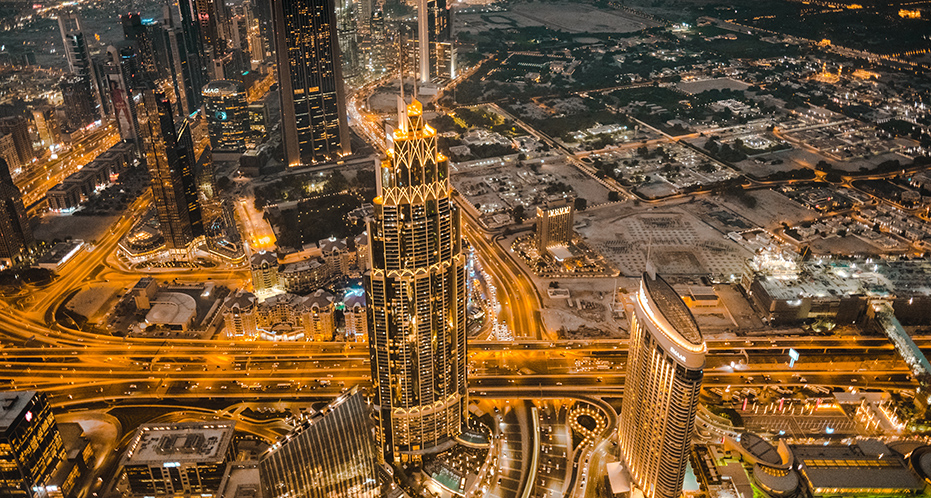Driving commercial and political engagement between Asia, the Middle East and Europe
Driving commercial and political engagement between Asia, the Middle East and Europe
Driving commercial and political engagement between Asia, the Middle East and Europe

Ahmed bin Sulayem,
Executive Chairman, DMCC
 In 2019, Dubai celebrates the 50th anniversary of leadership from His Highness Sheikh Mohammed Bin Rashid Al Maktoum, Vice President and Prime Minister of the United Arab Emirates and Ruler of Dubai. To mark the occasion, His Highness laid out a 50-year Charter, setting out a direction of travel for Dubai through the implementation of nine Articles.
In 2019, Dubai celebrates the 50th anniversary of leadership from His Highness Sheikh Mohammed Bin Rashid Al Maktoum, Vice President and Prime Minister of the United Arab Emirates and Ruler of Dubai. To mark the occasion, His Highness laid out a 50-year Charter, setting out a direction of travel for Dubai through the implementation of nine Articles.
The first of these Articles relates to the creation of a Dubai Silk Road, comprising nine initiatives and 33 projects. The Article depicts how Dubai is perfectly positioned to serve as a strategic crossroad between East and West, North and South, positioning it as an ideal platform for global traders to reach new geographies, especially in the East.
China’s growing presence globally has been building up slowly over the last decade or so. It has emerged from the US’ shadow geopolitically and economically and is accelerating its programme of regional security and economic leadership through its flagship Belt and Road Initiative (BRI). The sheer scale of the Initiative has taken it across Asia into Central Europe, the Middle East and North Africa, and right the way across Africa.
The BRI model is fairly simple to understand: its primary focus is securing oil energy; its secondary focus is on expanding trade and investment through infrastructure, and the third is to cooperate on ‘new energy’, such as nuclear. In 2016, China issued their first ever blue-print for its engagement with the MENA region, a paper entitled: Arab Policy Paper. Unsurprisingly, their main focus areas are heavily linked to the aforementioned BRI model.
Over the last three years, the UAE’s foreign trade and investment policy has targeted the BRI programme with a large degree of success. Here are a few examples: at DMCC, we built a coffee centre with our first MOU being with China’s Yunnan Province to facilitate the export of up to 13,000 tonnes of coffee to Dubai.
DP World announced its intention to invest US$1.9 billion in China, where it already operates three ports; and in December last year, Abu Dhabi Ports inaugurated COSCO Shipping Ports new Terminal at Khalifa Port to help connect Abu Dhabi to the company’s global network of 36 ports, boosting further trade flows along the Belt and Road network.
In terms of energy, ADNOC has enhanced its energy cooperation with China by not only increasing its crude exports, but also awarding Chinese oil and gas companies stakes in offshore concessions and exploring further cooperation agreements with other state entities such as Mubadala and Emirates Global Aluminium.
China is now one of the UAE’s top non-oil trading partners, and trade between the two countries reached an estimated US$53 billion in 2017, of which US$7 billion was FDI; and trade is expected to post a further growth of 6 to 8 per cent to reach $58 billion. It is encouraging to say that, in 2019, the UAE and China trade relations are stronger than ever.
This positive trade growth comes as no surprise to us. We have spent the last 17 years building a global trading hub for this purpose. We provide our member companies with a strategic geographic location, state-of-the-art offices, proximity to international airports and a whole suite of world-class services.
We have close to 16,000 companies registered, and have become one of the top global commodity trading hubs. Thus, the concept of creating a Dubai Silk Road proposed by His Highness is particularly exciting for us at DMCC, because creating, connecting and extending this ancient trade route is a central feature of our strategy.
We are committed to driving key national initiatives and attracting new trade flows to Dubai. Making ourselves an indispensable asset for the Belt and Road Initiative through the Dubai Silk Road will allow us to balance our own growth aspiration whilst ensuring the 50-Year Charter is realised.
